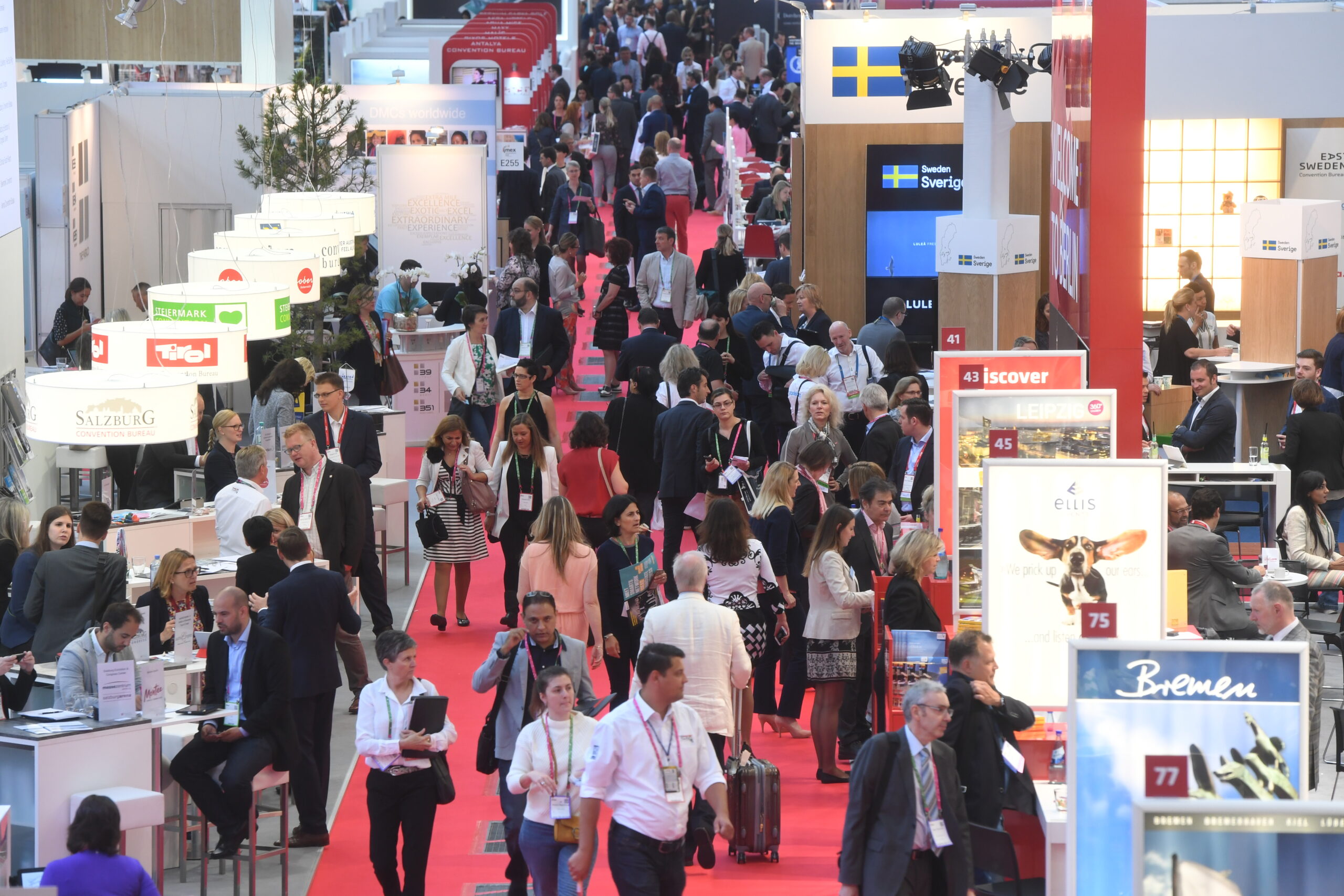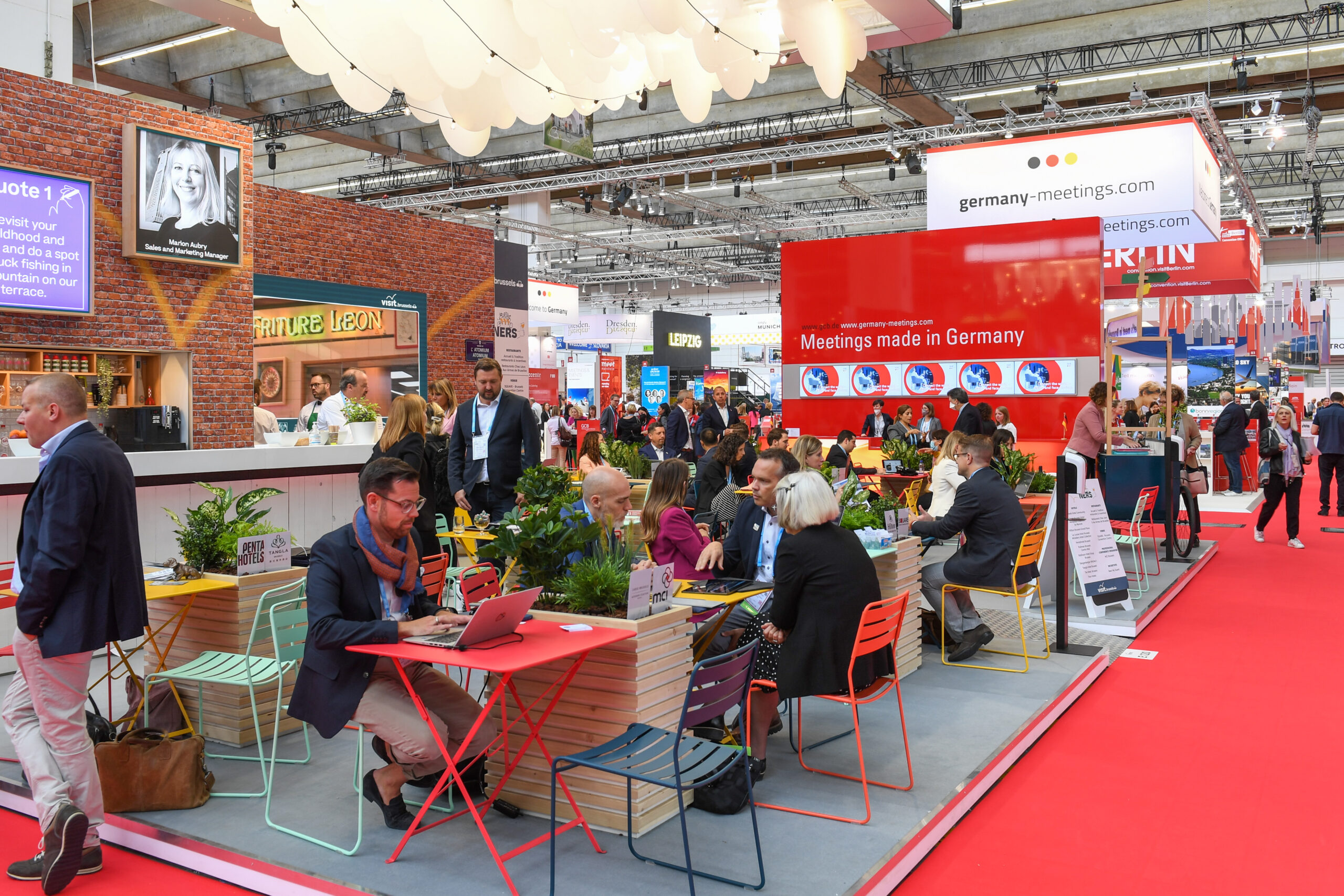Event tech trends from Europe’s largest industry show
Whenever people ask me why they should go to an IMEX show, I usually give the same answer: I meet many new wonderful people every year I attend, and every year almost everyone I know in the industry is there. This year was no exception, as I got to meet tons of people for the first time in person that I’d only ever seen in Zoom boxes. I also got to catch up, hug, laugh and have a few good German beers with people I already knew but hadn’t seen in person for over two years.
Besides those selfish (but nonetheless important) reasons, there is, of course, the show itself. Most attendees and hosted buyers are there for the destinations, but for the last 10 years, IMEX has had a growing technology section on the show floor.
“I got to catch up, hug, laugh and have a few good German beers with people.”
I use it as an opportunity to split time catching up with event technology providers I haven’t seen in a while and seeking out meetings with new suppliers I’ve never heard of before. Once again, the show didn’t disappoint.
Consolidating Market? Or Shrinking Budgets?
That being said, many of us felt that the tech area was smaller this year. I felt it right away, and several people made similar comments, unprompted. Julius Solaris, founder of Boldpush, posted that he’d actually reached out to show organizers and compared the maps to the last in-person version of the Frankfurt show, and that they were actually very similar.
Perhaps my impression was because I would have bet money that it was going to be larger than ever due to the explosion of event technology providers over the last two years. So it might be that “the same”, felt somehow smaller compared to that imagined increase in size.
It is fair to say that some of the big names like Cvent and Bizzabo had noticeably scaled-back booth areas, so that might have contributed to the feeling as well. Let’s face it, there is some uncertainty in the event tech space right now, as people decide how and when to incorporate digital events into their event portfolio. There’s also been a frenzy of mergers and acquisitions over the last year, essentially shrinking the number of large players in the market.
Read More: Cvent Connect Lays Out Event Tech Roadmap to Meet Growing Hybrid Demand
Don’t Put Baby in a Corner
Another factor was that several technology providers specifically chose not to be in the tech area. Conferli, a new destination search service, wanted to be “out and among the destinations” because that’s where people who need help, you know… finding destinations were going to be wandering. Makes sense. Several others seemed to have the same idea, wanting to stand out a bit from the other providers by being near, but not too near, the technology area.
Of course, another factor in that decision might be that, for the majority of the IMEX shows I’ve been to, the tech area has been relegated to the back of the hall. I’ve thought about suggesting to IMEX that they move the area to be, say, down the side of the hall, but that doesn’t really change much considering how wide expo floors can be as well.
I think the side of the hall might have actually been a little further than the back of the hall, depending on what door you came in. At the very least, six of one, half a dozen the other. Either way, it probably still makes sense to have most of the technology vendors in the same place, and let’s face it- it’s the destinations paying the majority of the bills, so they kind of need to be upfront and center. OK, back to the trends!
Babel Fish for All!

One thing I was pleased to see was multiple vendors working on translation services. I’ve been pleading with people to not abandon what we’ve learned from the last two years of online events in a rush to “get back to normal.” If you do so, you’re leaving potential audience members behind.
Online events allowed planners to reach global markets, and with that expanded reach came increased needs for translation and transcription services. Many of these services can still be used on our in-person events for a reasonable price, so why not continue to keep our events as inclusive as possible?
While several of the features offered by the vendors were similar, each had a different take on the problem of live interpretation. Interprefy offers primarily live, human translators being sent an audio feed of the event, and then attendees can then “tune in” using their own phone or a widget embedded in an online platform to hear the translation. They then use text-to-speech engines in the native languages to transcribe the already-translated audio.
Read More: Lessons from IMEX Frankfurt to Look for at IMEX America
Wordly goes all-in on the machine-based translation, sending an audio feed to their servers, where it’s automatically translated into text in whatever languages are required. It was pretty cool to watch a session in progress at IMEX (they were the official translation provider) and just flip between live transcriptions in any of the languages available on a drop-down box—which was a lot. You can even “prime the pump” by providing them with a glossary of language likely to come up at your event, making the transcriptions more accurate.
Finally, Kudo offered more “live group” translation. As best as I could understand, you could be on the equivalent of a Zoom call with multiple people speaking different languages—up to 32 in one meeting! You could then choose which language you wanted to hear everyone in, and they’d all be translated to your chosen language. Very darn near Star Trek, people.
*Eyeroll* Fine… The Metaverse.
As much as I feel the Metaverse is “all hat, no cattle” at this point, it was entertaining to grab a couple of demos from companies promoting “meeting in the Metaverse.” Was it fun? Sure was. Could I see myself doing it for multiple hours at a time? Ehhhhhhh…I tried to attend Microsoft’s Build conference last year in my Oculus headset, and only lasted about 15 minutes before I switched back to desktop. Maybe for the right group as an “experience,” sure.
Read More: What Do NFTs and the Metaverse Offer Planners?
What’s more interesting to me is that both of the versions I tried seemed so desperately trying to replicate the in-person experience. If I’m going to be going into an alternate reality, why not try and blow my mind instead of building theaters with screens and seats, or 3D convention centers? I can play beer pong for realsies and I’m not bad at it. Why do it in VR? Any idea how hard it is to chug a beer with a VR headset on? Um, no…I mean, neither do I.
Focus on… Something!
A positive trend from my standpoint, I was pleased to see event tech providers starting to admit that they had specialization in the market. In the past, I’ve asked providers, “What’s your target market?”
“Oh, we’re good for any type of event.”
“Right, but associations? Corporate?”
“Yeah, we’re a great solution for everyone.”
“Sure, sure. But where did you start? What’re the majority of your clients?”
“Well, we really are good for anyone, but I guess if I HAD to pick, we have all these plugins that are for medical meetings because that’s the majority of…”
So basically I’d have to ask three times before I could find out what their specialty was. This year, I had multiple vendors actually lead with, “We’re an online platform provider primarily targeting the [corporate/associations/medical/financial] market.”
Not only does that selfishly save me a bunch of time, but it also helps planners enormously, who frequently are looking for features specific to their sector or industry. There are no true “one size fits all” solutions out there, so let’s not pretend there are. It’s OK to specialize, and it’s OK to advertise that specialization. Your future clients will thank you, and let’s hope that trend continues!
This article appears in the August 2022 issue. You can subscribe to the magazine here.





